The Global passive optical LAN (POL) Market size is valued at US$ 54.07 Bn in 2025 and is expected to reach US$ 220.12 Bn by 2032, growing at a compound annual growth rate (CAGR) of 22% from 2025 to 2032.
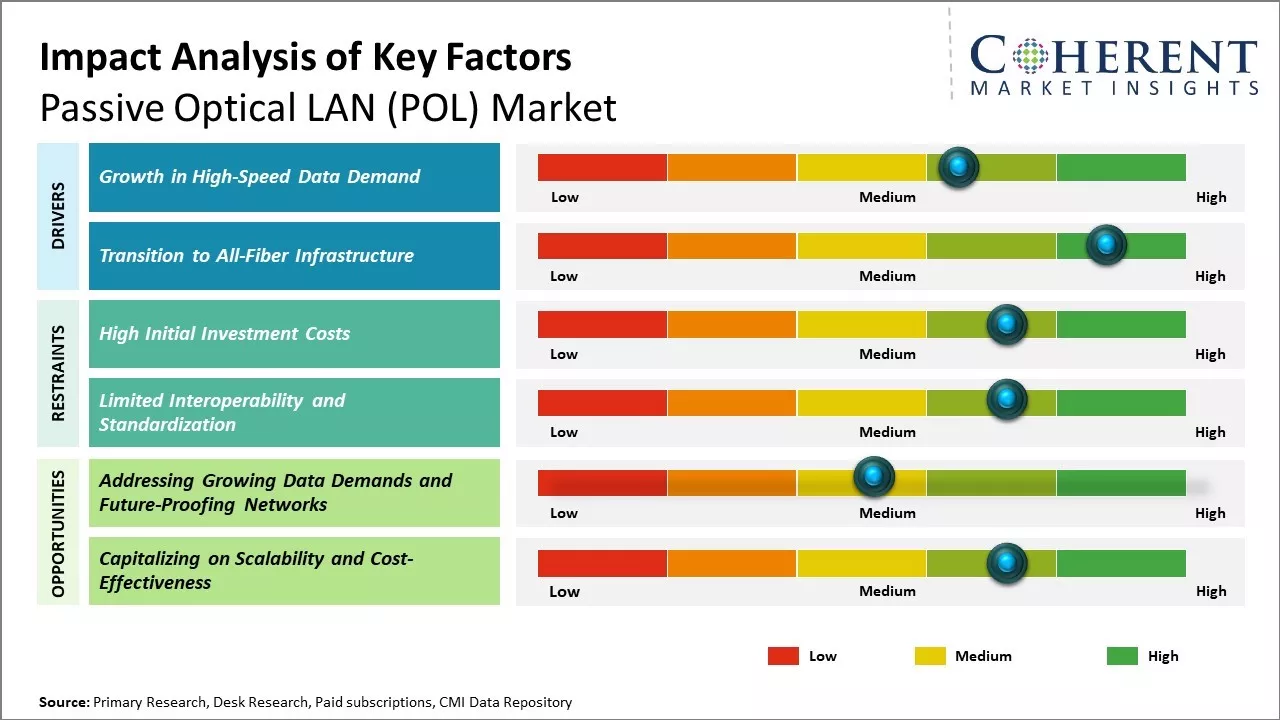
Discover market dynamics shaping the industry: Download Free Sample
Furthermore, rising demand for high-speed broadband services and growing need for data centers is fuelling the market growth. POL networks use optical fiber to deliver data, voice, wireless, and video services throughout an organization without needing active electronic components between end devices.
The market is expected to witness growth substantially during the forecast period due to increasing demand for high-speed connectivity, low maintenance associated with POL deployment, and rising investments to develop digital infrastructure across industries. Additionally, shift toward fiber-to-the-X connectivity to support surging bandwidth needs along with emergence of concepts like 5G, IoT, and cloud computing will further bolster the market growth between 2025-2032.
Growth in High-Speed Data Demand
The demand for faster internet and connectivity has been growing tremendously in the past few years. With the emergence of bandwidth-intensive applications like video conference calls, 4k streaming, online gaming, and others., the need for high-speed fiber optic networks has increased greatly. Traditional copper cables are no longer able to support the data transmission needs of today. Passive optical LAN offers a future-proof solution with its ability to deliver ultra-high bandwidth through a single fiber strand. Unlike copper, fiber optics have virtually unlimited bandwidth and can easily scale up to support emerging technologies like virtual reality, smart homes/cities, autonomous driving, and othersinto the future. Organizations are recognizing that passive optical LAN will allow them to future-proof their network infrastructure and stay ahead of changing connectivity needs. As more people work remotely and video becomes an essential part of communication, high-speed fiber networks will be critical for business operations and customer experiences.
For instance, in February 2021, Verizon Communications acquired Tracfone Wireless Inc. is a prepaid, no-contract mobile phone provider, to expand its product offering and access a new client base, enhancing its wireless network capabilities. Verizon Communications is a prominent player in the telecommunications industry, offering a wide range of mobility goods and services.
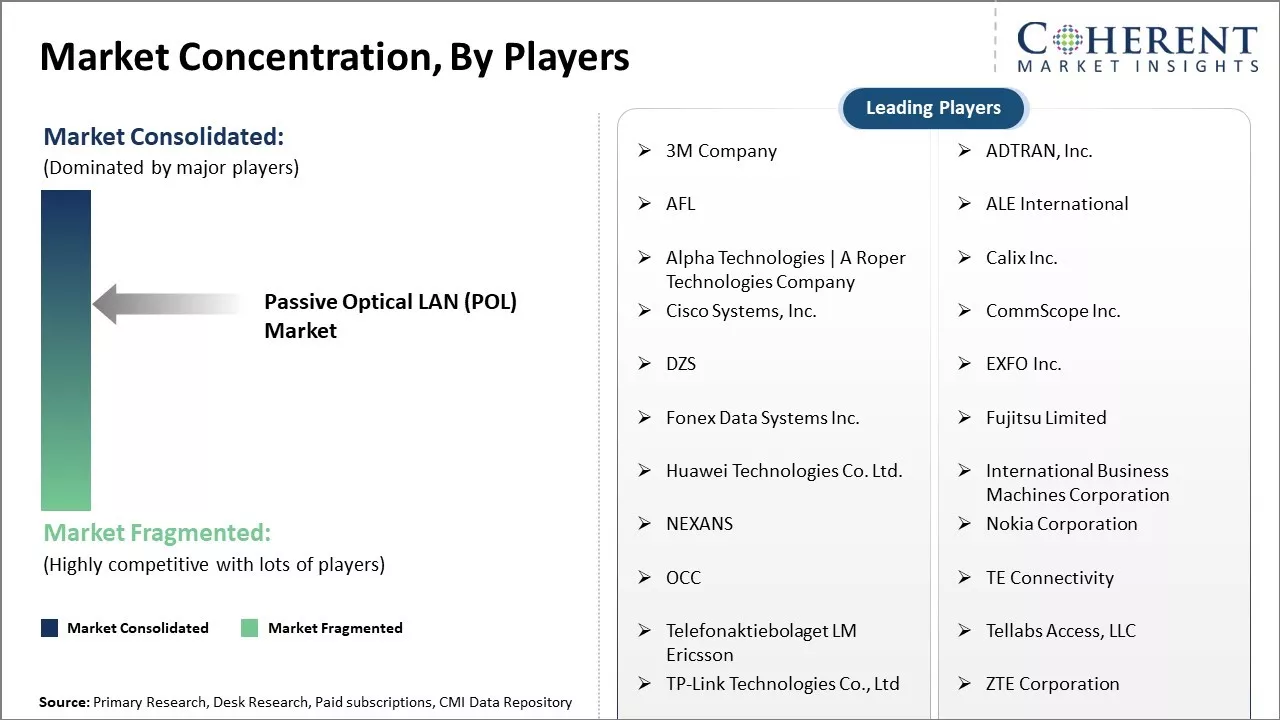
Get actionable strategies to beat competition: Download Free Sample
Transition to All-Fiber InfrastructureA massive transition is underway globally from hybrid fiber-copper networks to complete fiber networks as copper starts reaching its limitations. While copper networks have serviced connectivity needs for decades, these are simply not equipped for the bandwidth demands of the digital era. Constant upgrade and maintenance of aging copper infrastructure is also becoming a significant expense. Fiber offers clear advantages over copper - it is faster, more reliable, secure, future-proof and has nearly limitless bandwidth capacity. Fiber cabling takes up less space, produces no electromagnetic interference and does not corrode over time. Pushing fiber all the way to endpoints through passive optical LAN eliminates active electronics in the infrastructure. This results in a future-proof, scalable and easy to manage network. Many organizations are proactively transitioning to end-to-end fiber networks for long term sustainability. Governments around the world are also investing heavily in full fiber connectivity to fuel economic growth. All these factors are boosting demand for passive optical LAN solutions that deliver fiber to every desk.
For instance, in May 2021, Airfiber, an Indian-based internet service provider, initiated data services using Gigabit Passive Optical Networking (GPON).
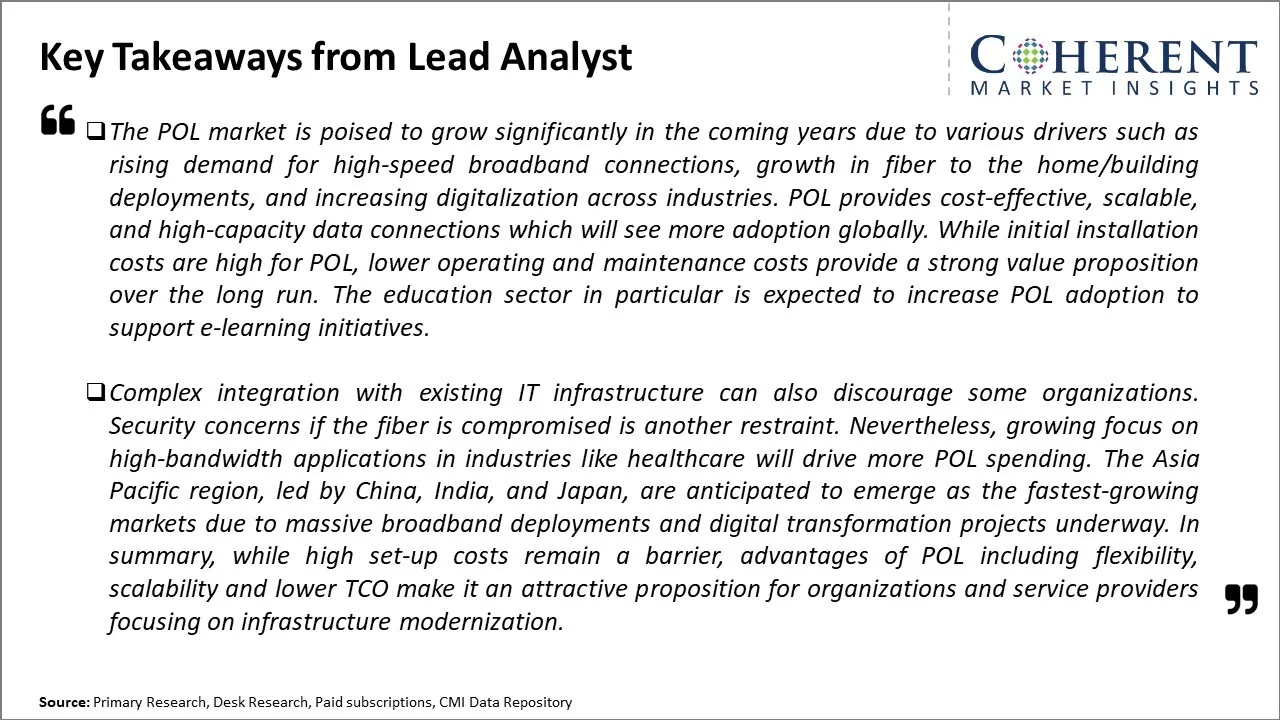
To learn more about this report, Download Free Sample
Market Challenges: High Initial Investment CostsA big challenge for the market is the hefty upfront investment needed to build the network infrastructure. Since the technology is still new, there are worries about different products from various vendors working well together. It will take time to set common standards. Also, many organizations already have copper infrastructure, so convincing them to switch to a new system can be tough without a strong business reason. Switching to the new technology also means training existing staff and managing the network differently, which can slow down widespread adoption in the short term.
Market Opportunities: Addressing Growing Data Demands and Future-Proofing Networks
The market is set to expand greatly in the coming years because the technology provides scalability and better bandwidth compared to old-fashioned wired networks. Many organizations are realizing the importance of preparing their network infrastructure for the growing demand for data in the future.
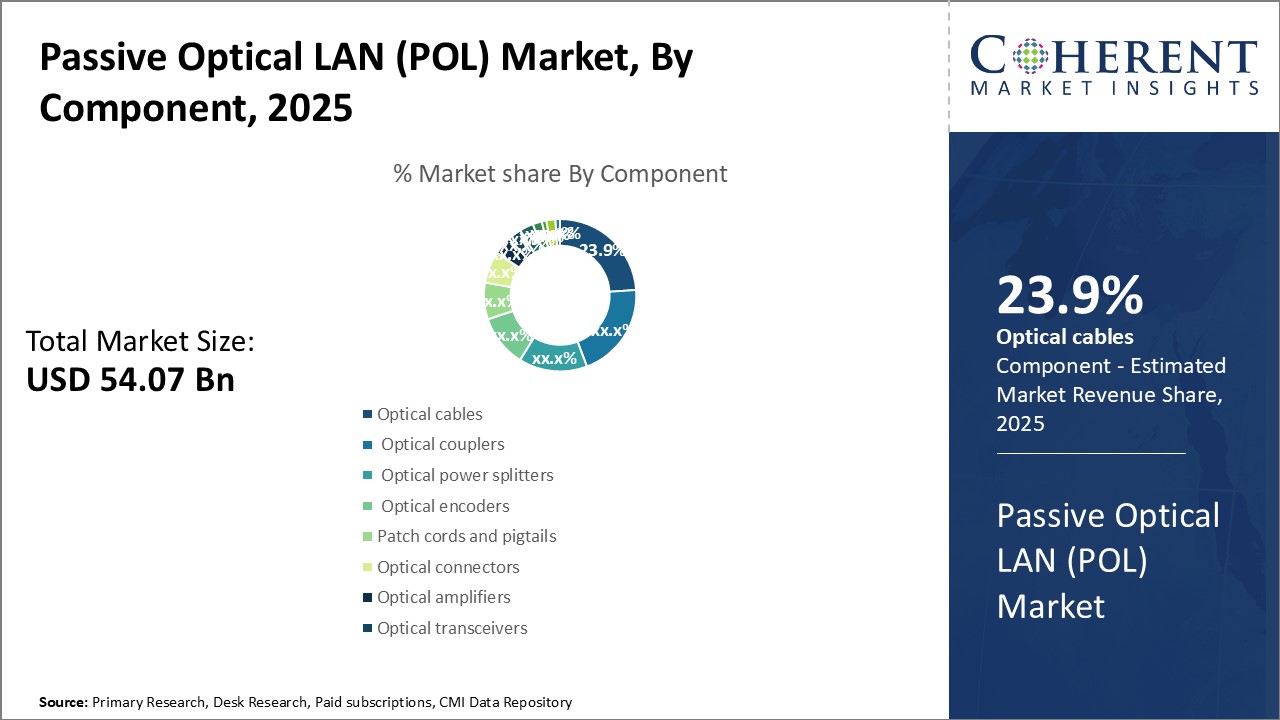
Discover high revenue pocket segments and roadmap to it: Download Free Sample
Insights, By Component, Advantages of Optical Cables Boosts its DemandIn terms of component, optical cables segment is estimated to hold the highest share of 24.6% in 2025, owing to their unique advantages over traditional copper cables. Optical cables have a much higher bandwidth capacity, enabling them to support high-speed data transmission needs. As data usage continues growing exponentially, driven by video streaming, remote working, IoT devices, and other applications, the bandwidth capabilities of optical cables are able to keep up with demand. Their ability to carry vast amounts of data without signal degradation over long distances makes them ideal for networking applications.
Optical cables are also much lighter and more flexible than copper cables of comparable bandwidth. This makes them easier to install, particularly over long spans. The flexibility of optical cables allows them to be routed through existing infrastructure without the need for extensive renovations. Their lighter weight also reduces installation and material transport costs. From an operational standpoint, optical cables produce no electromagnetic interference, eliminating related connectivity issues that can plague copper networks. They are also immune to radio frequency interference and electrical surges or faults that could disrupt signal transmission.
The inherent bandwidth and distance capabilities of optical cables are helping to enable new technologies like 5G networks and smart city implementations. As internet usage continues shifting to higher bandwidth applications, optical cables will remain vital for networking backbone infrastructures. Their installation advantages also make them attractive for applications with space or structural constraints. Overall the unique technical advantages and ability to support future connectivity needs drive sustained demand that keeps optical cables as the leading component in POL systems.
Insights, By Application- FITL Drives Optical Fiber Deeper into Access Networks
In terms of application, fiber in the loop (FITL) segment is estimated to contribute the highest share of 34.29% in 2025, owing to the affordability and reliability it provides. FITL involves placing optical fiber deeper into access networks, bringing it closer to end users. This allows telephone companies to retire aging copper infrastructures and upgrade to higher bandwidth fiber in a cost-effective manner.
By using FITL, the final connection from the curb to the customer premises can remain copper wires. This retains some of the legacy assets while gaining major bandwidth boosts from most of the optical fiber route. It reduces upfront costs compared to a complete “fiber to the home” implementation. FITL also maintains continuity of service during the transition, avoiding disruption that can accompany full replacement of legacy infrastructure.
As consumers increasingly cut the cord and switch to streaming media and bandwidth-intensive home internet usage, FITL ensures access networks can support these higher speeds. Its hybrid fiber-copper approach maximizes the performance upgrade while minimizing costs. Remote troubleshooting and network monitoring are also improved compared to copper alone. Overall FITL strikes the right balance between affordability, network evolution, and user experience gains - driving its share of applications within POL deployments.
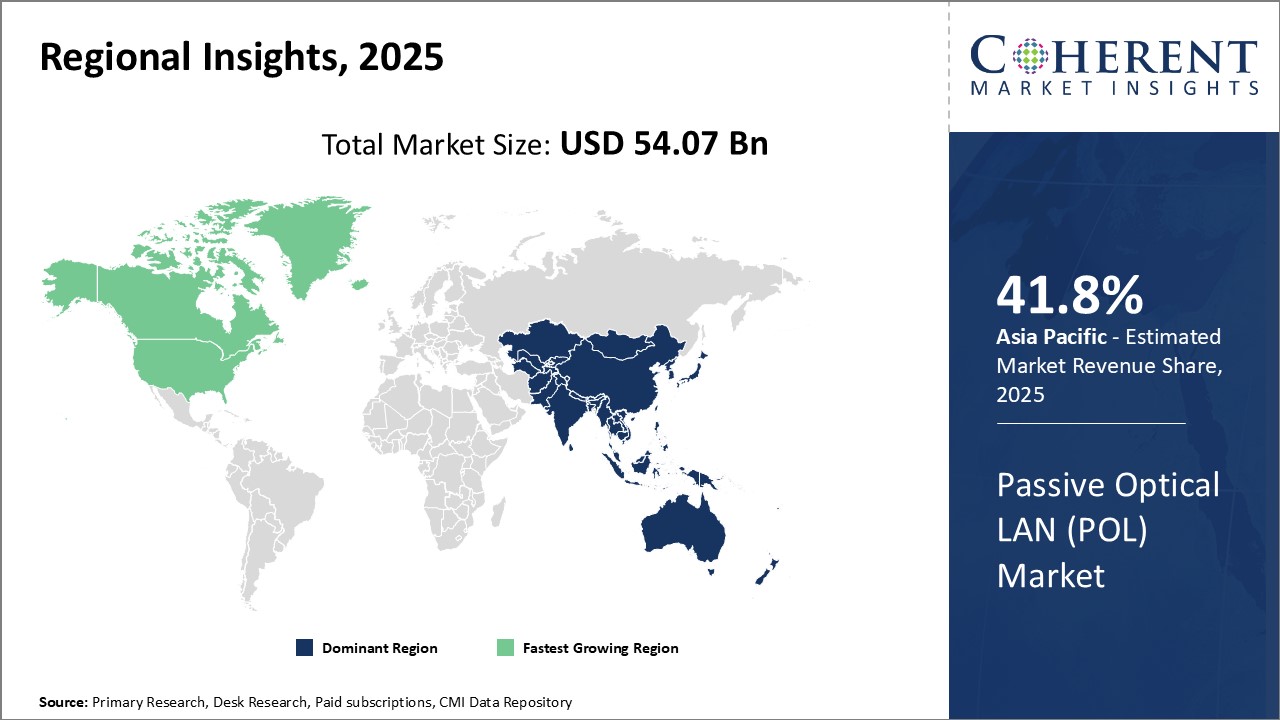
Need a Different Region or Segment? Download Free Sample
The Asia Pacific region has become a dominant force and the fastest-growing market for POL (Passive Optical LAN) worldwide. With an expected market share of 41.8% and a growth rate of 25.84% in 2025, this is largely due to the rapid digitalization efforts by governments, especially in developing countries like India and Indonesia, which are pushing for large-scale fiber rollouts. Many telecom companies in the region have ambitious plans to achieve full fiber connectivity in the coming years, opening up significant opportunities for POL vendors. Additionally, the increasing presence of large-scale enterprises and hyperscalers with extensive networks is driving private network deployments. Moreover, the Asia Pacific region serves as a global manufacturing hub, with many network OEMs having production capabilities here. This positions the region perfectly to not only meet the growing local demand but also to export POL equipment. Local production also allows POL solution providers to offer competitive and customized solutions.
Passive Optical LAN (POL) Market Report Coverage
| Report Coverage | Details | ||
|---|---|---|---|
| Base Year: | 2024 | Market Size in 2025: | USD 54.07 Bn |
| Historical Data for: | 2020 To 2024 | Forecast Period: | 2025 To 2032 |
| Forecast Period 2025 to 2032 CAGR: | 22.2% | 2032 Value Projection: | USD 220.12 Bn |
| Geographies covered: |
|
||
| Segments covered: |
|
||
| Companies covered: |
3M Company, ADTRAN, Inc., AFL, ALE International, Alpha Technologies | A Roper Technologies Company, Calix Inc., Cisco Systems, Inc., CommScope Inc., DZS, EXFO Inc., Fonex Data Systems Inc., Fujitsu Limited, Huawei Technologies Co. Ltd., International Business Machines Corporation, NEXANS, Nokia Corporation, OCC, TE Connectivity, Telefonaktiebolaget LM Ericsson, Tellabs Access, LLC, TP-Link Technologies Co., Ltd, ZTE Corporation |
||
| Growth Drivers: |
|
||
| Restraints & Challenges: |
|
||
Uncover macros and micros vetted on 75+ parameters: Get instant access to report
*Definition: Passive Optical LAN (POL) market provides networking solutions that use point-to-multipoint topology for data transmission via optical fibers without the need for electrical repeaters. A POL system consists of an optical line terminal located at the central office and multiple optical network terminals placed near the user premises. It uses passive splitters to divide the optical signal from a single fiber and deliver it to multiple locations without the need for active components, resulting in a more cost-effective and reliable local network.
Share
Share
About Author
Suraj Bhanudas Jagtap is a seasoned Senior Management Consultant with over 7 years of experience. He has served Fortune 500 companies and startups, helping clients with cross broader expansion and market entry access strategies. He has played significant role in offering strategic viewpoints and actionable insights for various client’s projects including demand analysis, and competitive analysis, identifying right channel partner among others.
Missing comfort of reading report in your local language? Find your preferred language :
Transform your Strategy with Exclusive Trending Reports :
Frequently Asked Questions
Joining thousands of companies around the world committed to making the Excellent Business Solutions.
View All Our Clients